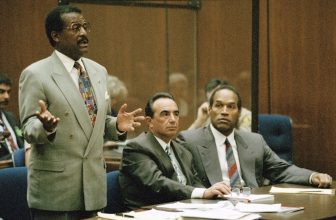

Benjamin Franklin said, “By failing to prepare, you’re preparing to fail.” Sounds wise, but I doubt Benjamin Franklin carried on a busy litigation practice.
During my 40-plus years in the trenches, I always prepared my clients prior to examinations for discovery, also known in the USA as depositions. But notwithstanding my adherence to Benjamin Franklin’s credo, some of my clients still dropped the ball no matter how well I prepared them.
I would send out a letter describing the process, and, of course, we would meet in advance to go over the case and make sure the clients understood what awaits them. Generally, after explaining the drill and admonishing the client to tell the truth, these instructions specifically boiled down to about five main points.
1. Keep your answers short—never volunteer information
Easier said than followed. I had a case involving a young woman who suffered severe facial scarring in a motor vehicle car accident. We pleaded that as a result of the wreck, she became depressed. At the discovery, the opposing counsel asked when she started taking her antidepression medication. She replied, “About two years ago, before Christmas, just after I broke up with my fiance.”
This answer opened up a Pandora’s box. The opposing lawyer beamed, as if he just discovered Blackbeard’s treasure. He continued, “Why don’t we delve into this breakup.” His client investigated, interviewing the fiance, who was only too happy to spill some dirt on my client, compromising our case.
Not my fault. I warned her.
2. When discussing your injuries, give a complete answer
After this disaster, I used to reiterate the need to keep it short, even telling clients about my “fiance” case. Needless to say, one client’s pendulum swung the other way. Mike was a sports jock who enjoyed engaging in summer and winter sports, including skiing, hockey, martial arts, marathon running, tennis and pingpong, to name just a few. I was surprised he never participated in an Olympics triathalon.
Unfortunately, he suffered injuries in a car accident, which hit his enjoyment of life big time. At his examination, he took my advice about keeping it short—to an extreme. When asked what he can no longer do, he replied, “I can’t play pingpong.”
I felt like giving him a kick under the table. What flashed in front of me was that iconic James Bond scene in From Russia With Love where Col. Klebb (the Spectre agent) activates a poison switch spike in her shoe as she struggles with Bond. But actually, I felt like kicking myself. Where did I go wrong? At least the client listened to me about keeping his answers short.
3. Do not exaggerate your injuries
A common question defense counsel would ask was, “On a scale of 1 to 10, how would you rate your backaches? One is mild, and 10 is a 911 call.” Although this one got through to most clients, one client here actually said emphatically, “Ten!”
Opposing counsel continued, “Do you want to take a break, so you can call an ambulance?” The client replied, “No, I just have to stand up; I can’t sit for more than 15 minutes straight.”
The problem at this point was that he already had been seated for over an hour.
I just knew my case hit an iceberg. But unlike the Titanic, we had no lifeboats.
4. Do not give absolute numbers, such as for times, distances, dates, etc., unless you are certain
I would suggest they leave some wiggle room, saying “about 50 feet” or “approximately three months” or “between 10 and 15 seconds.” Although this suggestion worked most of the time, there is a tendency for people not to want to sound ignorant, and they feel they must be specific.
I was once the beneficiary of an opposing party who, when I asked how fast his truck was traveling in a 30-miles-per-hour zone about 10 seconds before entering the intersection facing an amber light, replied, “I was crawling, 20 miles per hour, neither more nor less.” And yet he could not stop. I went on to another topic quickly, not trying for a home run. Yes!
5. This is a solemn occasion; don’t be afraid of the other lawyer, but don’t get too get too friendly, either
This was not a common problem, but it once took me aback.
I warned the client that opposing counsel cold be a bit abrasive. To my surprise, my opponent showed up wearing a tie covered with Looney Tunes characters. My client breathed a sigh of relief. He expected an ogre, and he was getting Bugs Bunny.
Furthermore, on the contrary, the two became a bit cordial, and they started discussing favorite cartoon characters. The other lawyer just loved the Road Runner, while my client routed for Wile E. Coyote. They achieved instant rapport, agreeing that the No. 1 character was Yosemite Sam.
The atmosphere throughout was certainly light and jovial. The way the mood persisted, I thought maybe I could leave the room, that my client did not need my services at this stage. Fortunately, the case resolved favorably shortly thereafter. Maybe it helped that I also added my vote of approval of Yosemite Sam.
Benjamin Franklin was right on with his comment about the importance of preparation. But the best of us, no matter how well prepared, will somehow still have some of our cases blow up at the examination office, though maybe not from a device manufactured by Acme bombs.
Marcel Strigberger, after 40-plus years of practicing civil litigation in the Toronto area, closed his law office and decided to continue his humor writing and speaking passions. His latest book is First, Let’s Kill the Lawyer Jokes: An Attorney’s Irreverent Serious Look at the Legal Universe. Visit MarcelsHumour.com, and follow him at @MarcelsHumour on X, formerly known as Twitter.
ABAJournal.com is accepting queries for original, thoughtful, nonpromotional articles and commentary by unpaid contributors to run in the Your Voice section. Details and submission guidelines are posted at “Your Submissions, Your Voice.”






